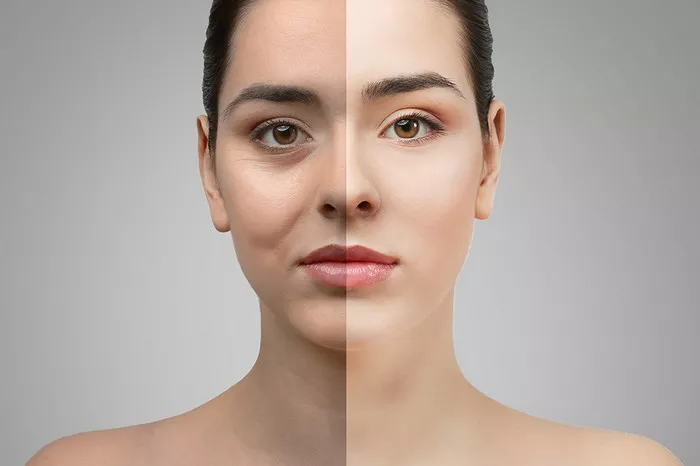The desire for rejuvenated and open eyes often leads individuals to explore the cost to remove hooded eyelids, a common concern associated with aging or genetic factors. This comprehensive guide delves into the intricacies of the financial aspects surrounding eyelid surgery, exploring the factors influencing costs, potential variations, and considerations that individuals should bear in mind when embarking on the journey to unveil clearer, more youthful eyes.
Understanding Hooded Eyelids: The Canvas for Transformation
Before delving into the cost considerations, it’s essential to understand what hooded eyelids entail. Hooded eyelids are characterized by excess skin that droops over the upper eyelid, often obscuring the natural crease and causing a “hooded” appearance. This condition can be a result of aging, genetic predisposition, or a combination of both. The decision to address hooded eyelids often stems from both cosmetic and functional concerns, with individuals seeking to improve their aesthetic appearance and, in some cases, alleviate vision obstruction caused by severe hooding.
The Role of Blepharoplasty: Surgical Intervention for Hooded Eyelids
Blepharoplasty, commonly known as eyelid surgery, is the primary surgical intervention to remove hooded eyelids. This procedure involves the removal of excess skin, fat, and, in some cases, muscle from the upper or lower eyelids, resulting in a more lifted and rejuvenated appearance. The decision to undergo blepharoplasty is highly individual, and factors such as the degree of hooding, overall eye health, and personal aesthetic goals play a crucial role in determining candidacy for the procedure.
Factors Influencing the Cost: A Mosaic of Considerations
The cost to remove hooded eyelids is influenced by a mosaic of factors that collectively contribute to the overall financial investment. One of the primary considerations is the geographic location of the surgical facility. Urban centers and regions with a higher cost of living often have higher surgical fees. The experience and reputation of the surgeon also play a significant role, with more experienced and well-regarded surgeons typically charging higher fees. Additionally, the complexity of the procedure, whether addressing both upper and lower eyelids, and the inclusion of additional techniques, such as fat grafting or laser resurfacing, can further impact the overall cost.
Breaking Down the Components: Surgical Fees and Beyond
The cost to remove hooded eyelids comprises various components, each contributing to the total financial investment. Surgical fees encompass the charges associated with the surgeon’s expertise, the use of the surgical facility, and any necessary anesthesia. Consultation fees, pre-operative assessments, and post-operative care may also be included in the surgical fees. Beyond the surgical realm, individuals should factor in additional costs such as prescription medications, post-operative garments, and any potential revision surgeries that may be required for optimal results.
Geographic Variances: Navigating Regional Cost Differences
Geographic variances in the cost to remove hooded eyelids are a notable consideration when individuals explore their options. Surgical fees can vary significantly from one region to another, reflecting differences in the cost of living, demand for cosmetic procedures, and the prevalence of experienced surgeons. While some individuals may opt to travel to regions with lower surgical fees, it’s crucial to weigh this decision against the potential challenges of managing post-operative care and follow-up appointments from a distance.
Experience and Expertise: The Price of Surgical Skill
The experience and expertise of the surgeon play a pivotal role in the overall cost to remove hooded eyelids. Highly experienced and reputable surgeons, often with a track record of successful blepharoplasty procedures, may command higher fees. While the allure of cost savings may lead some individuals to consider less experienced or less qualified practitioners, it’s essential to prioritize surgical skill and safety over financial considerations. Choosing a board-certified plastic surgeon with specific expertise in eyelid surgery enhances the likelihood of achieving optimal results and minimizing potential complications.
Insurance Coverage: Navigating the Landscape of Reimbursement
In certain cases, insurance coverage may come into play when addressing hooded eyelids, especially when the condition significantly impacts vision. If the hooded eyelids result in visual impairment, insurance companies may consider the procedure a medical necessity rather than a cosmetic enhancement. Documentation from an ophthalmologist or optometrist detailing the functional impairment caused by hooded eyelids may support a case for insurance coverage. However, it’s crucial for individuals to thoroughly understand their insurance policies, including coverage limitations and requirements for pre-authorization.
Financing Options: Easing the Financial Journey
Recognizing that the cost to remove hooded eyelids can be a significant financial investment, many individuals explore financing options to make the procedure more accessible. Some surgical facilities offer in-house financing plans, allowing patients to spread the cost over time with manageable monthly payments. External financing options, such as medical credit cards or third-party financing companies, provide additional flexibility. However, individuals should carefully review the terms, interest rates, and repayment schedules associated with these financing options to make informed decisions about their financial commitment.
Considerations for Revision Surgery: Factoring in Potential Costs
While blepharoplasty is generally considered a long-lasting solution for addressing hooded eyelids, some individuals may consider revision surgery for various reasons. Factors such as changes in the aging process, personal preferences, or dissatisfaction with the initial results may prompt the need for revision. It’s essential for individuals to inquire about the surgeon’s policy on revision surgeries and any associated costs. Understanding the potential for revision surgery and factoring this into the overall financial planning ensures a comprehensive approach to the cost of addressing hooded eyelids.
Conclusion
The decision to explore the cost to remove hooded eyelids is a personal journey that extends beyond the financial considerations. It encompasses a desire for clarity, confidence, and a refreshed perspective. Understanding the factors influencing the cost, including geographic variances, surgical expertise, and potential insurance coverage, empowers individuals to make informed decisions about their investment in rejuvenated eyes. As the financial landscape converges with the pursuit of aesthetic enhancement, individuals embark on a transformative path toward unveiling clearer, more expressive eyes, each blink radiating newfound confidence.

